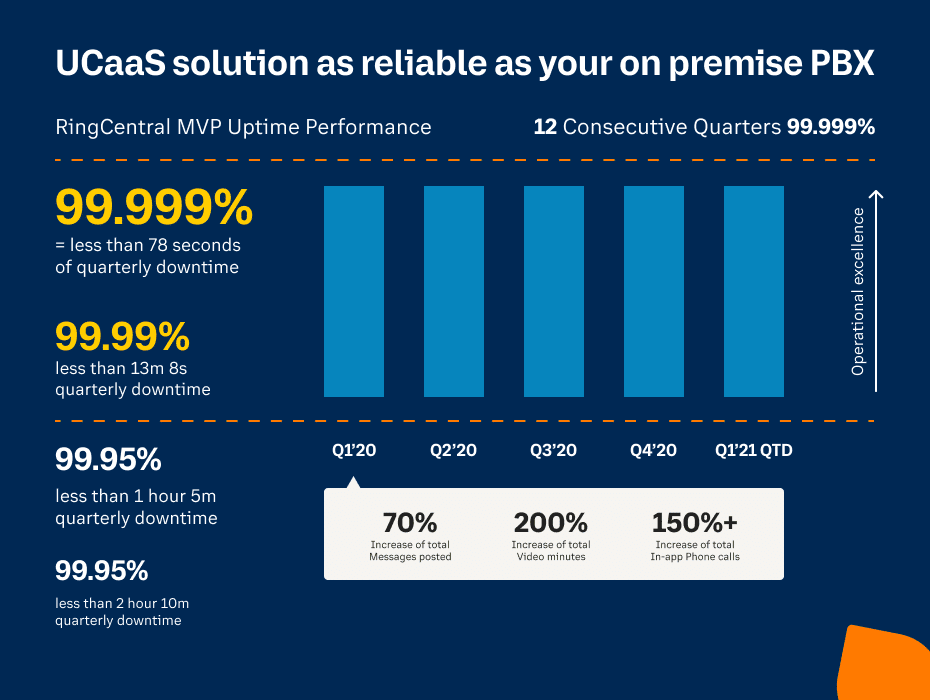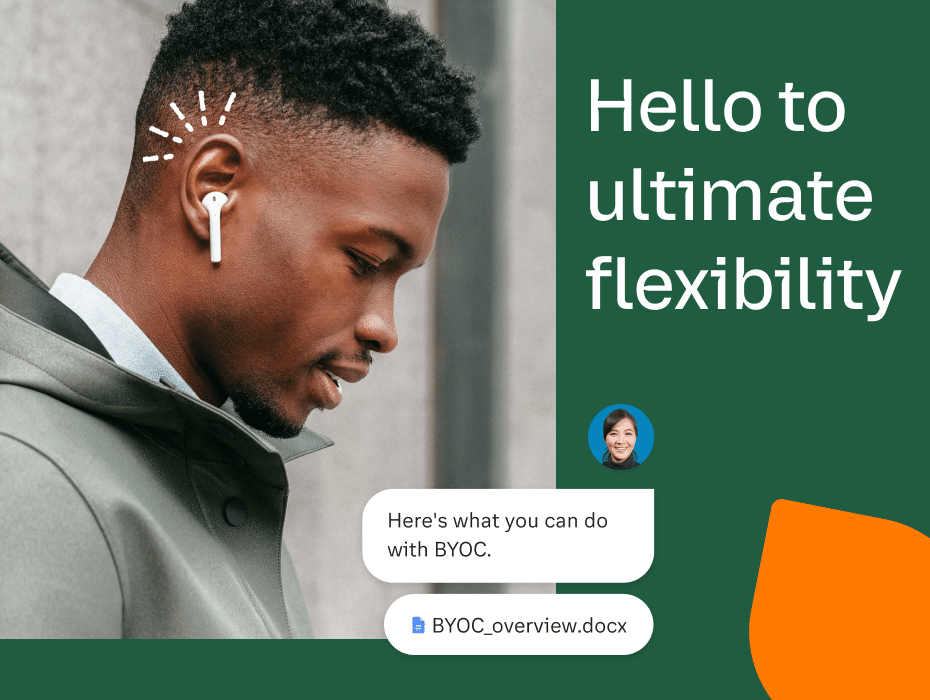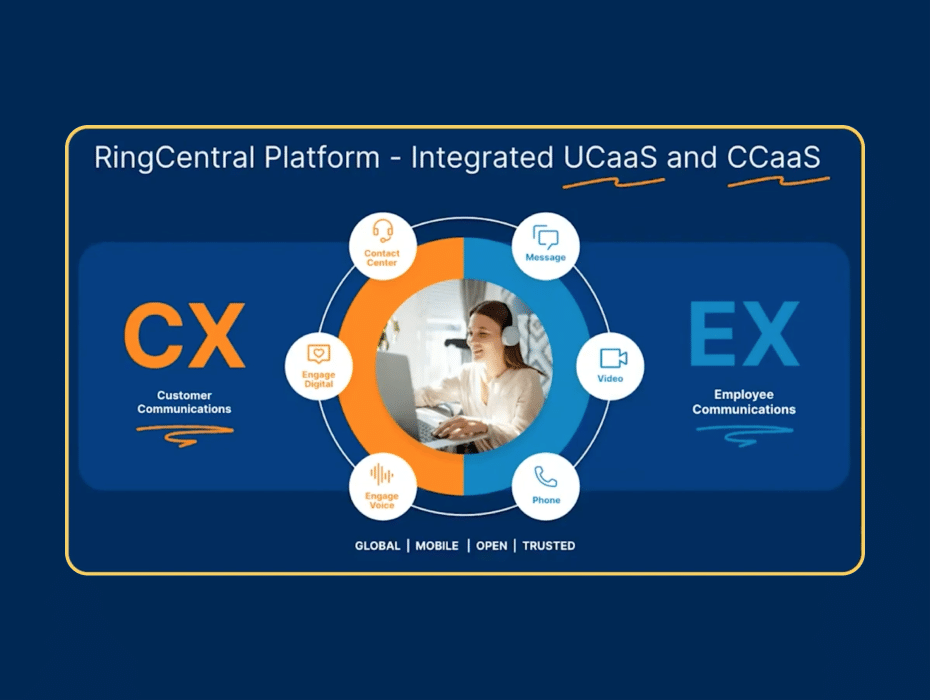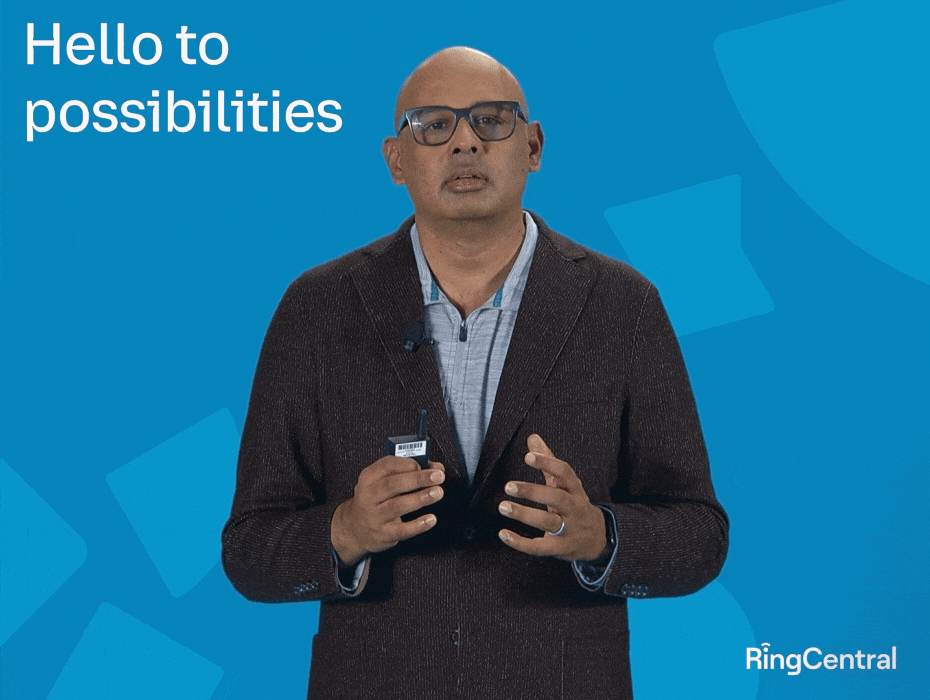At a glance:
- Unmatched reliability: Never drop a call again
- Options to transform at your pace
- Intelligent Voice: Bringing AI to your phone calls
- Powerful voice analytics
- Supercharging mobile voice
- Composability
When you think about phones, the first thing that comes to mind is probably a desk phone. But as we covered at RingCentral Connect 2021, the nature of work—and voice technology as a whole—has fundamentally transformed over the last couple of years.
And while phone calls are just as important as they’ve always been for business communications, how we use our phones and what we need them to do is evolving.
⭐ What is UCaaS? ⭐
Everything you need to know about unified communications. For beginners.
We believe that phone calls are just getting started, with many new innovations coming to market. RingCentral is at the center of this shift—powering a new age of voice, where we focus on enriching phone calls with intelligent conversations.
In our RingCentral Connect 2021 session on the future of voice, our speakers highlighted some of the ways we’re expanding our phone capabilities. And there’s a lot to unpack.
Speakers:
- Esther Yoon, Assistant Vice President of Product Marketing
- Praveen Mamnani, Vice President of Products
Here’s what they covered on the new age of voice:
1. Unmatched reliability: Never drop a call again
At RingCentral, we maintain rapid innovation cycles with 8-12 week release cadences, backed by a large R&D group focused exclusively on the cloud.

These aggressive innovation cycles ensure that the RingCentral solution remains on the leading edge and is modern, relevant, and rich with functionality.
While pressing our innovation edge, RingCentral is architected and able to maintain and upgrade the system with no scheduled downtime, resulting in service availability exceeding 99.999% uptime.
“Every minute of downtime has a direct impact on a brand’s reputation and customer loyalty—and represents a significant cost to businesses. Our cloud platform reduces downtime to seconds in a month, single-digit minutes in a year.”
2. Options to transform at your pace
Migrating to the cloud is a journey—and while cloud services are an important part of how businesses enable their workforces, especially if they are working hybrid or remote, every company is at a different place in their journey.
Some organizations have already gone all-in with new cloud solutions, while others may still be tied to existing telecom carriers and providers or may be taking their time for various other reasons.

At RingCentral, we’re making it easier to approach this transformation your way. For example, we’re rolling out Bring Your Own Carrier (BYOC), which allows customers to use RingCentral with their existing telecom provider.
Organizations that want to take a more gradual approach to migrating their communications can continue leveraging their existing relationships and avoid penalties from broken contracts. We call it transformation at your own pace.
3. Intelligent Voice: Bringing AI to your phone calls
Intelligent Voice is RingCentral’s innovation pillar that points to our feature sets driven by Artificial Intelligence (AI).
One of our key investments is creating uncompromising phone security features powered by AI. For example, our customer data shows us that spam calling & robocalling are costing businesses millions in terms of lost productivity, customer satisfaction, and cybersecurity issues.

RingCentral is uniquely positioned to address these concerns by securing phone communications against these threats. Some examples are as follows:
- Robocall mitigation and spam blocking: Using predictive AI, industry tracebacks, and the STIR/SHAKEN framework, we stop fraudulent robocalls and fraudulent spam attacks before they ever reach users.
- RingOut and number masking: With a RingCentral business line, phone users can place calls with their RingCentral phone number instead of their personal number. This maintains privacy and keeps personal and business identities separate.
- Emergency response locations for E911 calls: RingCentral delivers enhanced location accuracy and provides unique caller identification information on E911 calls for users in the U.S., meeting critical compliance requirements.
4. Powerful voice analytics
Business conversations are full of actionable data. For example, analyzing information such as call volume can help to assess the performance of agents or teams, while more granular data on the calls themselves might help to identify phrases or incentives that drive better results with callers.
Our Intelligent Voice framework (mentioned above) is at the center of these analytics. Features like speech analytics can analyze spoken words and can even identify the emotions of the speaker based on what they’re saying—something that can give your agents (and supervisors) a huge advantage in any type of customer call.
We’re also working on technology that uses AI-based natural language processing (NLP) and machine learning (ML) to turn customer calls into hard data. Our speech recognition is always getting more accurate, and is the key behind giving our customers the actionable insights that they can leverage as well as learn from.
5. Supercharging mobile voice
RingCentral was built with mobile power users in mind. We design our features for the mobile experience first, especially as companies venture further into hybrid and remote work models.

We’re taking our mobile narrative to the next level with next-gen features like our native dialer capabilities, which was launched with our strategic partner AT&T Business.
The native dialer erases the line between business wireline and mobile phone service and means no extra software to disrupt normal workflows. It gives users simultaneous and sequential ring options to minimize calls going to voicemail. It also includes an auto receptionist voice response service that routes calls to wherever your employees work from.
6. Composability
Phones that only work as phones in siloed workflows are from a bygone era. Part of how we’re helping businesses get more out of their phone systems is through integrations with other apps they use frequently.
For example, our integration with Workday enterprise management software allows IT teams to automatically assign a phone number to a new hire when they go through onboarding. The integration eliminates the need for telecom managers to manually add new phone lines for every new hire—saving time and money.

Combined with zero touch provisioning and you can imagine the seamless way in which new employees can be onboarded to your company with reduced hiccups.
These are in addition to our already extensive App Gallery, which is full of prebuilt integrations with popular business tools, and our open API for developers to build their own integrations.
Doing more with advanced voice
The phone is no longer a standalone tool that’s tethered to workers’ desks. As workplaces evolve at a faster pace than ever before, companies need more out of their communications—and more out of their voice communications. And investing in mobility alone isn’t enough.
Originally published Dec 07, 2021, updated Nov 03, 2023





